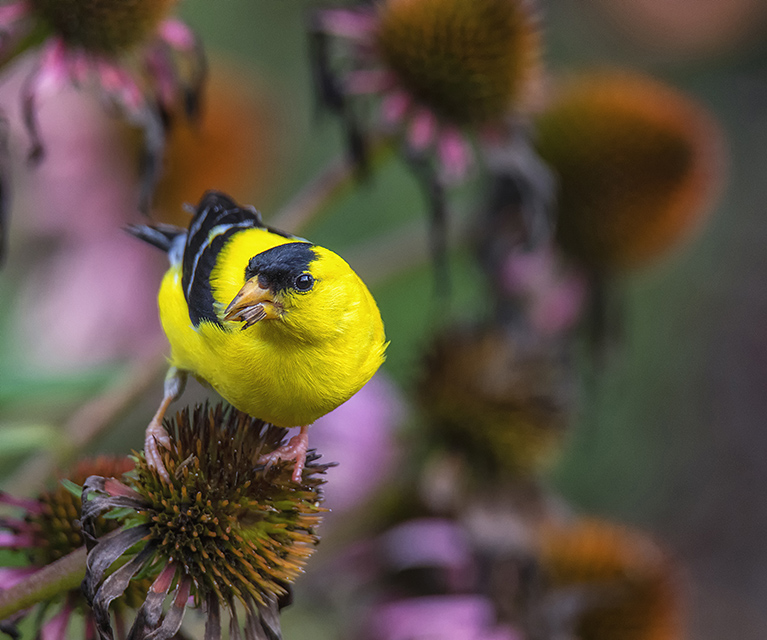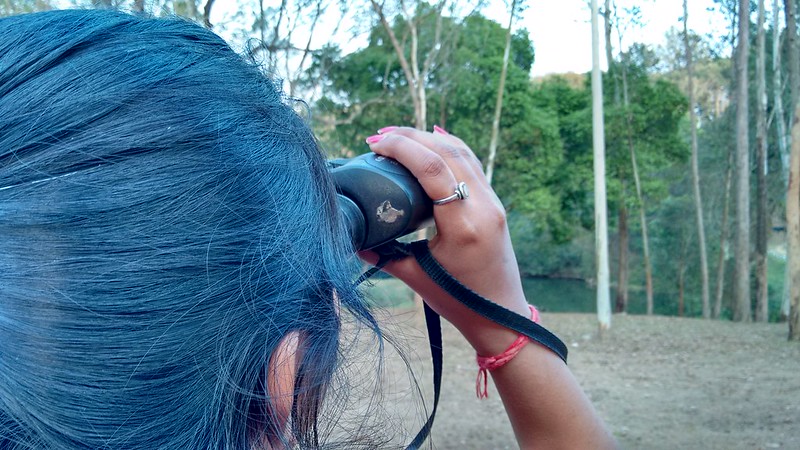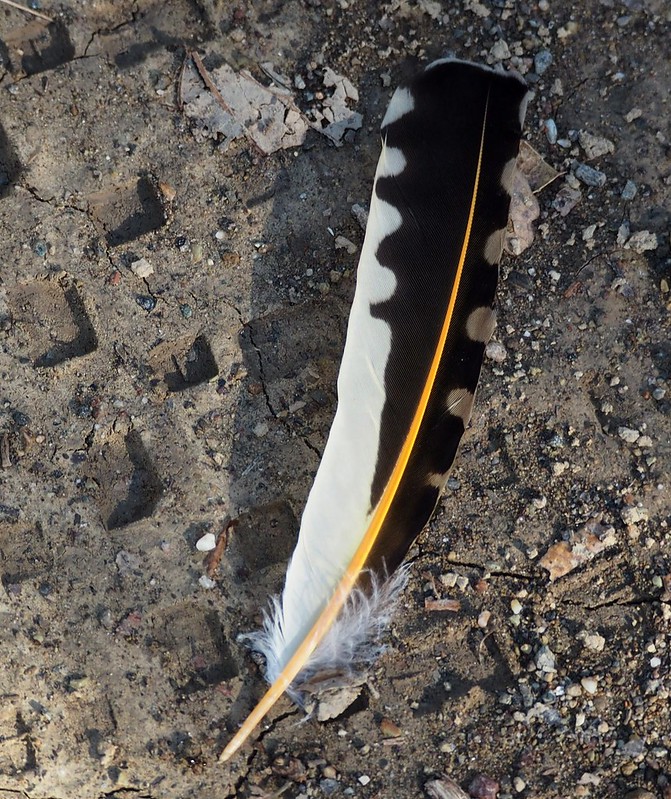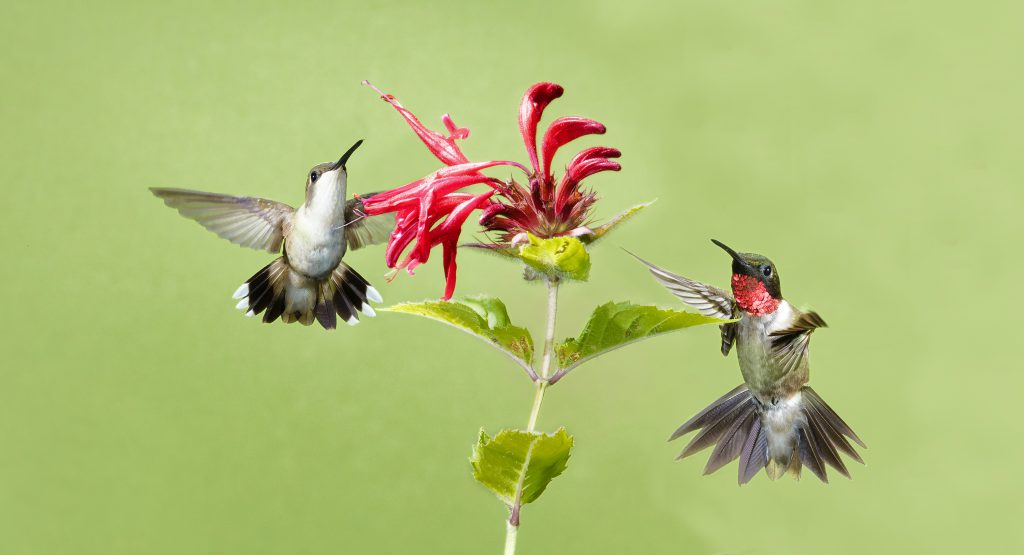Backyard Birding Tips
There is no better time to connect with wildlife in your backyard than now. With spring underway, many bird species are increasing their activity. Winter birds like dark-eyed juncos are heading north while migrants like ruby-throated hummingbirds are returning to Maryland.
1. Get Prepared. Grab a notebook and some writing utensils to create a birding journal. Download the free Audubon Bird Guide app or Merlin and check out the settings before heading outside. Get acquainted with local birds so you are familiar with what might be in your area. Check out our Common Feeder Bird guide for some birds that you might see in your backyard. For information on how to draw birds, check out the How To Draw a Bird guide by Audubon. Consider using some of Cornell Lab of Ornithology’s tips for Feeder Setup that Deliver Great Photos. Binoculars are not necessary for birding, but they can be a very helpful investment. Consider renting binoculars to decide if you would like to invest in a pair. Use Cornell’s All About Birds Binocular guide to choose the right pair for you.
2. Sit Spot. One of the best ways to start birding is to bird by ear. Find a quiet place, sit down, close your eyes, and listen to the noises. What do you hear? What will help you remember the calls you are hearing? Sometimes we make up mnemonics to help remember certain bird songs. For example, a mnemonic for a barred owl call might be “Who cooks for you?”. Check out the Audubon Name that Tune page for more ideas.
3. Look for Signs. Even if you can’t see or hear birds, you can still find signs that birds have been in the area. Look for whitewash (poop), feathers, nests, owl pellets, and more. Check out the Feather Atlas to identify unknown feathers. If you have children, ask them questions about what you find. Have them compare the size of the feathers to their hand then guess how big the bird might be. Owls create pellets from indigestible materials. These pellets help give us clues about what owls ate. Learn about Maryland’s owls here. Watch a video on the great-horned owl here. If you find any owl pellets, use gloves and dissect it to see what it ate or try to dissect one virtually.
4. Engage the Kids. Make birding a family adventure. Go on a bird scavenger hunt. Ask questions – are those cardinals fighting or playing? Why is the robin flipping leaves? What is the biggest bird at our feeder? Audubon for Kids has a wealth of resources to teach about local birds. Check out our Bird Activities to do at Home document for more ideas on how to teach about birds.
5. Bring the Birds to You. Consider adding native plants to your landscape that provide food and shelter for birds. Consider adding a feeder (and keep it clean!) and/or a bird bath. Place nest boxes out with proper predator guards. Find out which birds use nest boxes (also called bird houses) where you live using the Right Bird, Right House Guide from the Cornell citizen-science project, NestWatch. Help local birds by making your home and school more bird friendly. Check out Lights, Out Baltimore to learn about ways to create bird friendly buildings by making windows more visible to birds.
6. Make a Yard List. Keep track of who visits your yard AND collect data for science by keeping an eBird yard list. Check out Cornell Lab of Ornithology’s Ebirding from Home article for more information. If using eBird, consider joining the MD-DC Breeding Bird Atlas to document local breeding birds.
6. Start Small. With over 450 species of birds documented in Maryland, you have a lot to learn! Start with common birds first and learn how to identify them and their behaviors. Work your way up to the more advanced birds to identify like warblers. When the quarantine is over, consider joining a local Maryland Ornithological Society chapter and going on birding walks with others.

American goldfinches are easy to attract with seed-bearing plants like purple coneflower by Larry Helms (DNR Photo Contest)
Finally, keep in touch! Let me know if you have any questions about local birds or how to attract them. I also would love to see any of your backyard bird photos!
Happy Spring HabiChat fans!
I hope this newsletter finds you and your loved ones happy and healthy. While this certainly is a trying time, we can make the most of quarantine by connecting with our backyard habitats and the residents they support. I have been enjoying the sounds and signs of spring, including watching an amorous mourning dove woo a potential mate. So far, his attempts seem to be successful!
While many local native plant sales have been canceled, vendors have been working to provide plants via online means. Check out the Maryland Native Plant Society website for a list of local vendors. This time is also a great one to tackle some of the invasive plants that may have found their way into your yard. Check out the Plant Invaders of Mid-Atlantic Natural Areas for information on common invaders and how to properly remove them. I, for one, have been tackling quite a bit of periwinkle (Vinca minor) on the weekends.
In this edition of Habichat, I have created articles on our native mining bees which are active early in the spring, the lovely maple-leaved viburnum, backyard birding tips, and how to create backyard habitat while sheltering in place. In addition to HabiChat, I have also included activities to do with children at home on our wildlife education page.
As spring continues, young wildlife are going to venture out from their dens and nests. It’s important to remember that wildlife don’t have the same parenting procedures as we do, and they often ‘free range’ their young. Check out our page on Think Twice Before Rescuing Young Wildlife to learn about normal behaviors of young animals.
Happy Habitats,
Kerry Wixted
Click here to have HabiChat—the quarterly backyard wildlife habitat newsletter from the Wild Acres program—delivered right to your inbox!
In this Issue
Habitat Tips: Creating Backyard Wildlife Habitat While Sheltering in Place
Native Animal Profile: Mining Bees
Native Plant Profile: Maple-leaved Viburnum
Backyard Birding Tips





 1-888-373-7888
1-888-373-7888 233733
233733